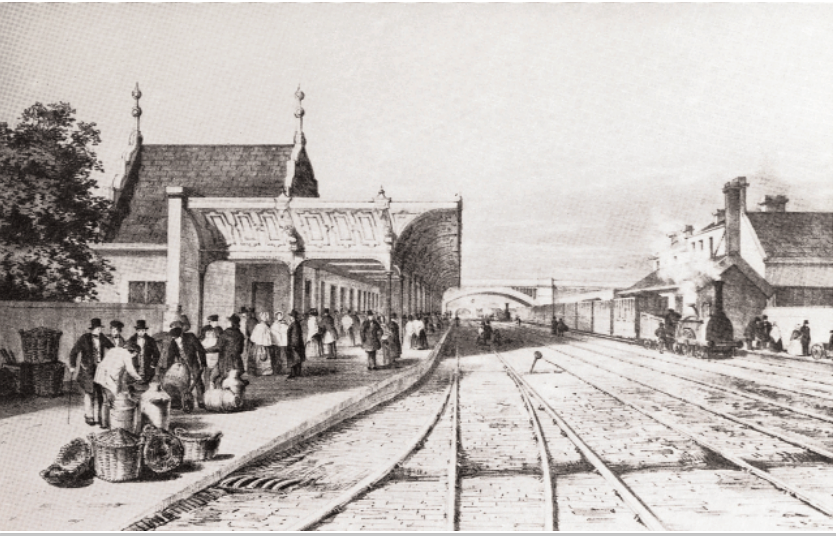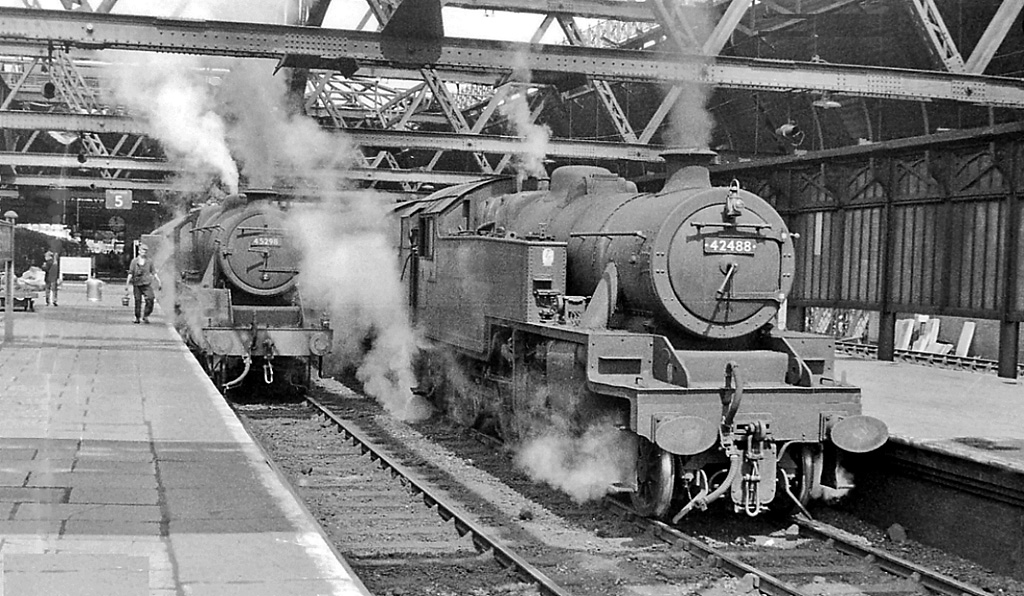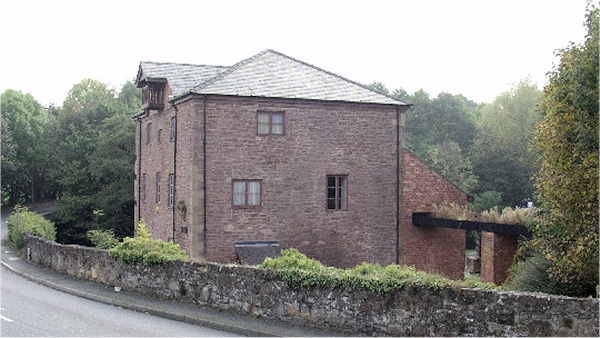|
Tŷ Croes Railway Station
Tŷ Croes railway station serves Tŷ Croes on the isle of Anglesey, Wales which is served by Transport for Wales Rail and is a request stop. History The station, originally to be named Llanfaelog, was opened in November 1848 with a signal box being added in 1872. The box is located next to a level crossing which separates the two staggered platforms. There was a warehouse and a crane nearby and a small goods yard which closed in 1964.Jones, Geraint: ''Anglesey Railways'', page 31. Carreg Gwalch, 2005 The crossing gates are still hand worked by the crossing keeper – the Grade II listed box was formerly a block post, but no longer works as such (the block section now runs from Gaerwen to )."NORTH WALES COAST RAILWAY:NOTICE BOARD – 25 Jan 2016" Hulme, C ''North Wales Coast Railway'' website; Retrieved 30 May ... [...More Info...] [...Related Items...] OR: [Wikipedia] [Google] [Baidu] |
Tŷ Croes
Tŷ Croes () is a small settlement two miles east of Rhosneigr, Anglesey, Wales. It was, for a short time, the home of No. 144 Signals Unit RAF, an RAF Strike Command mobile radar reserve. It has a railway station on the North Wales Coast Line which runs between Holyhead and Crewe. Tŷ Croes is home to Anglesey Circuit The Anglesey Circuit ( cy, Trac Môn) is a motor racing circuit located in Ty Croes, Anglesey, Wales. It plays host to a variety of motorsport events including car racing, motorcycle racing, car sprints, stage rallies and drifting. It open ... that holds events at both club and national level. The circuit was extended in 2006 and is used by a number of groups for testing both cars and motorcycles. One advantage of the circuit is its comparative remoteness (from London) which allows testing to be done without attracting too much attention. External links photos of Tŷ Croes and surrounding area on geograph.org.uk Villages in Anglesey Aberffr ... [...More Info...] [...Related Items...] OR: [Wikipedia] [Google] [Baidu] |
Block Post
A block post in railway signalling is the signal box at one end of a block section. German practice In Germany, block posts are known as ''Blockstellen'' (abbreviation: ''Bk'') and are defined as railway facilities on the open line that mark the end of a block section, as part of a block system. They usually have a home signal in each direction and on each running line. They are mainly found where the distance between two railway stations is greater than average. In the early years of the railway, block posts were local signal boxes manned with block post keepers. Today there are only a few of these classic, railway staff-operated block posts. Their function has been largely superseded by equipment that forms part of an automatic block signalling (''Selbsttätigen Streckenblocks'' or ''Sbk'') system or by a central block post in a station signal box at one end of the section between two stations. Block posts are described in the German railway regulations, the ''Eisenbahn-Bau- un ... [...More Info...] [...Related Items...] OR: [Wikipedia] [Google] [Baidu] |
Railway Stations Served By Transport For Wales Rail
Rail transport (also known as train transport) is a means of transport that transfers passengers and goods on wheeled vehicles running on rails, which are incorporated in tracks. In contrast to road transport, where the vehicles run on a prepared flat surface, rail vehicles (rolling stock) are directionally guided by the tracks on which they run. Tracks usually consist of steel rails, installed on sleepers (ties) set in ballast, on which the rolling stock, usually fitted with metal wheels, moves. Other variations are also possible, such as "slab track", in which the rails are fastened to a concrete foundation resting on a prepared subsurface. Rolling stock in a rail transport system generally encounters lower frictional resistance than rubber-tyred road vehicles, so passenger and freight cars (carriages and wagons) can be coupled into longer trains. The operation is carried out by a railway company, providing transport between train stations or freight customer faciliti ... [...More Info...] [...Related Items...] OR: [Wikipedia] [Google] [Baidu] |
Railway Stations In Great Britain Opened In 1848
Rail transport (also known as train transport) is a means of transport that transfers passengers and goods on wheeled vehicles running on rails, which are incorporated in tracks. In contrast to road transport, where the vehicles run on a prepared flat surface, rail vehicles (rolling stock) are directionally guided by the tracks on which they run. Tracks usually consist of steel rails, installed on sleepers (ties) set in ballast, on which the rolling stock, usually fitted with metal wheels, moves. Other variations are also possible, such as "slab track", in which the rails are fastened to a concrete foundation resting on a prepared subsurface. Rolling stock in a rail transport system generally encounters lower frictional resistance than rubber-tyred road vehicles, so passenger and freight cars (carriages and wagons) can be coupled into longer trains. The operation is carried out by a railway company, providing transport between train stations or freight customer facilit ... [...More Info...] [...Related Items...] OR: [Wikipedia] [Google] [Baidu] |
Former London And North Western Railway Stations
A former is an object, such as a template, gauge or cutting die, which is used to form something such as a boat's hull. Typically, a former gives shape to a structure that may have complex curvature. A former may become an integral part of the finished structure, as in an aircraft fuselage, or it may be removable, being using in the construction process and then discarded or re-used. Aircraft formers Formers are used in the construction of aircraft fuselage, of which a typical fuselage has a series from the nose to the empennage, typically perpendicular to the longitudinal axis of the aircraft. The primary purpose of formers is to establish the shape of the fuselage and reduce the column length of stringers to prevent instability. Formers are typically attached to longerons, which support the skin of the aircraft. The "former-and-longeron" technique (also called stations and stringers) was adopted from boat construction, and was typical of light aircraft built until the ad ... [...More Info...] [...Related Items...] OR: [Wikipedia] [Google] [Baidu] |
DfT Category F2 Stations
The Department for Transport (DfT) is a department of His Majesty's Government responsible for the English transport network and a limited number of transport matters in Scotland, Wales and Northern Ireland that have not been devolved. The department is run by the Secretary of State for Transport, currently (since 25 October 2022) Mark Harper. The expenditure, administration and policy of the Department for Transport are scrutinised by the Transport Committee. History The Ministry of Transport was established by the Ministry of Transport Act 1919 which provided for the transfer to the new ministry of powers and duties of any government department in respect of railways, light railways, tramways, canals and inland waterways, roads, bridges and ferries, and vehicles and traffic thereon, harbours, docks and piers. In September 1919, all the powers of the Road Board, the Ministry of Health, and the Board of Trade in respect of transport, were transferred to the new ministry. ... [...More Info...] [...Related Items...] OR: [Wikipedia] [Google] [Baidu] |
Railway Stations In Anglesey
Rail transport (also known as train transport) is a means of transport that transfers passengers and goods on wheeled vehicles running on rails, which are incorporated in tracks. In contrast to road transport, where the vehicles run on a prepared flat surface, rail vehicles (rolling stock) are directionally guided by the tracks on which they run. Tracks usually consist of steel rails, installed on sleepers (ties) set in ballast, on which the rolling stock, usually fitted with metal wheels, moves. Other variations are also possible, such as "slab track", in which the rails are fastened to a concrete foundation resting on a prepared subsurface. Rolling stock in a rail transport system generally encounters lower frictional resistance than rubber-tyred road vehicles, so passenger and freight cars (carriages and wagons) can be coupled into longer trains. The operation is carried out by a railway company, providing transport between train stations or freight customer faciliti ... [...More Info...] [...Related Items...] OR: [Wikipedia] [Google] [Baidu] |
Cardiff Central Railway Station
, symbol_location = gb , symbol = rail , image = Cardiff Central station (26526139271).jpg , caption = 1930s frontage of Cardiff Central station (northern entrance) , borough = Cardiff, City and County of Cardiff , country = Wales , coordinates = , grid_name = Grid reference , grid_position = , owned = Network Rail , manager = Transport for Wales Rail , platforms = 8 , code = CDF , classification = DfT category A , years = 19 June 1850 , events = Opened as ''Cardiff'' , years1 = 1896 , events1 = Enlarged , years2 = 1924 , events2 = Renamed ''Cardiff General'' , years3 = 1931–34 , events3 = Rebuilt , years4 = 1940 , events4 = Merged with Cardiff Riverside station , years5 = 1964 , events5 = Riverside platforms closed , years6 = 1973 , events6 = Renamed ''Cardiff Central'' , years7 = 2015-17 , events7 = Enlarged , mpassengers = , footnotes = Passenger statistics from the Office of Rail and Road , mapframe=yes , mapframe-zoom = 13 Cardiff Cen ... [...More Info...] [...Related Items...] OR: [Wikipedia] [Google] [Baidu] |
Crewe Railway Station
Crewe railway station is a railway station in Crewe, Cheshire, England. It opened in 1837 and is one of the most historically significant railway stations in the world.Guardian newspaper article, ''The beauty of Crewe'' (6 December 2005). Retrieval Date: 10 August 2007. Crewe station is a major junction on the and serves as a rail gateway for . It is 158 miles north of |
Shrewsbury Railway Station
Shrewsbury railway station is in Shrewsbury, Shropshire, England. Built in 1848, it was designated a grade II listed building in 1969. The station is north west of Birmingham New Street. Many services starting at or passing through the station are bound for Wales; it is operated by Transport for Wales, although the station is also served by Avanti West Coast and West Midlands Railway services, and is one of the key network hubs of Transport for Wales. History The station was formerly known as Shrewsbury General and is the only remaining railway station in the town; Shrewsbury Abbey, as well as other small stations around the town, having long closed. Shrewsbury railway station was originally built in October 1848 for the county's first railway — the Shrewsbury to Chester Line. The architect was Thomas Mainwaring Penson of Oswestry. The building is unusual, in that the station was extended between 1899 and 1903 by the construction of a new floor underneath the original st ... [...More Info...] [...Related Items...] OR: [Wikipedia] [Google] [Baidu] |
Wrexham General Railway Station
Wrexham ( ; cy, Wrecsam; ) is a city and the administrative centre of Wrexham County Borough in Wales. It is located between the Welsh mountains and the lower Dee Valley, near the border with Cheshire in England. Historically in the county of Denbighshire, and later the county of Clwyd in 1974, it has been the principal settlement of Wrexham County Borough since 1996. Wrexham has historically been one of the primary settlements of Wales. At the 2011 Census, it had an urban population of 61,603 as part of the wider Wrexham built-up area which made it Wales's fourth largest urban conurbation and the largest in north Wales. The city comprises the local government communities of Acton, Caia Park, Offa and Rhosddu. Wrexham's built-up area extends further into villages like Bradley, Brymbo, Brynteg, Gwersyllt, New Broughton, Pentre Broughton and Rhostyllen. Wrexham was likely founded prior to the 11th century and developed in the Middle Ages as a regional centre for trade an ... [...More Info...] [...Related Items...] OR: [Wikipedia] [Google] [Baidu] |
Listed Building
In the United Kingdom, a listed building or listed structure is one that has been placed on one of the four statutory lists maintained by Historic England in England, Historic Environment Scotland in Scotland, in Wales, and the Northern Ireland Environment Agency in Northern Ireland. The term has also been used in the Republic of Ireland, where buildings are protected under the Planning and Development Act 2000. The statutory term in Ireland is " protected structure". A listed building may not be demolished, extended, or altered without special permission from the local planning authority, which typically consults the relevant central government agency, particularly for significant alterations to the more notable listed buildings. In England and Wales, a national amenity society must be notified of any work to a listed building which involves any element of demolition. Exemption from secular listed building control is provided for some buildings in current use for worship, ... [...More Info...] [...Related Items...] OR: [Wikipedia] [Google] [Baidu] |








